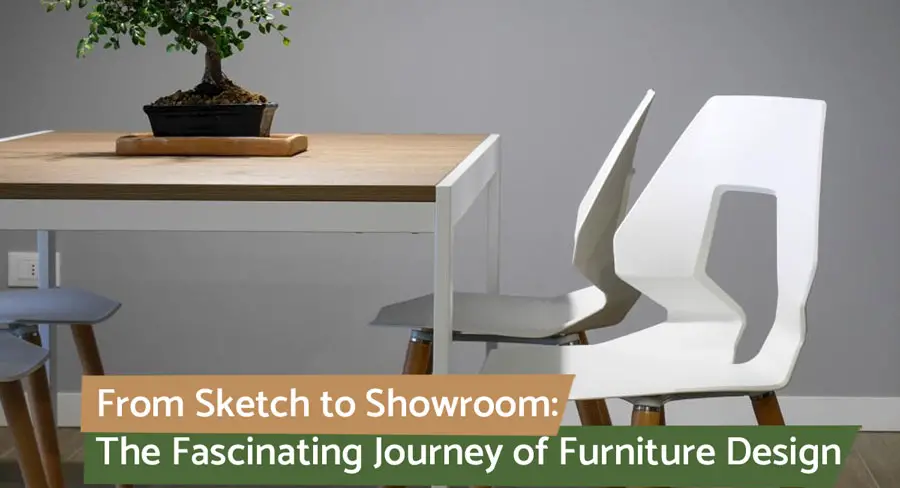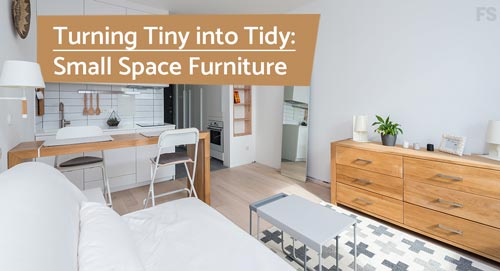From Sketch to Showroom: The Fascinating Journey of Furniture Design

The world of furniture is not just about style and comfort; it's about the journey each piece takes from a mere concept to a functional work of art adorning homes and offices. This journey, from a designer's sketch to a showroom's display, is a testament to creativity, craftsmanship, and collaboration. Let's delve into the captivating stages of furniture design and appreciate how an idea evolves into a tangible product.
Table of Contents
- Introduction
- Concept and Inspiration
- The Design Sketch
- Material Selection
- Prototyping and Refinement
- The Craft of Manufacturing
- Quality Control
- The Showroom Debut
- Marketing and Storytelling
- The Consumer Connection
Concept and Inspiration
The first step in designing furniture is the ideation phase, where concept and inspiration merge. Designers draw from various sources: nature, fashion, architecture, or even a problem that needs solving within a living space. Here, creativity knows no bounds as designers sketch initial thoughts, playing with lines, forms, and functions to create something new and needed in the world of interiors.
The Design Sketch
Once a spark of inspiration ignites, designers begin to give life to their ideas through detailed sketches. In this phase, aesthetics intersect with functionality. The sketches are crucial for visualizing the final product and exploring various angles, proportions, and details. It is a deeply creative process that requires vision and technical skill to transition from a fleeting thought to a concrete design.
Material Selection
A significant aspect of furniture design is selecting the right materials. This decision affects not only the look and feel of the furniture but also its durability and sustainability. Designers must consider the textures, grains, weight, and environmental impact of the materials. From solid woods to engineered composites, sumptuous fabrics to innovative recyclables, each material contributes its unique character to the final piece.
Prototyping and Refinement
With materials chosen, it's time to create a prototype—a three-dimensional version of the initial sketches. Prototyping is a critical trial-and-error process that refines the design. It's where functionality is put to the test, comfort is assessed, and structural integrity is scrutinized. Craftsmen work meticulously to adapt the design, ensuring the final product is not only beautiful but also meets quality standards.
The Craft of Manufacturing
The journey from prototype to a finished piece is in the skilled hands of craftsmen. Traditional techniques blend with modern technology, as wood is cut, joints are assembled, and finishes are applied with precision. The manufacturing process is an intricate dance of machines and manual labor, one that varies widely between mass-produced pieces and bespoke, hand-crafted items.
Quality Control
Before a piece of furniture reaches the showroom, it must first pass through rigorous quality control. This stage ensures that every item adheres to design specifications and is crafted with exacting standards. Scrutiny is placed on every detail, from the stability of the structure to the perfection of the finish, ensuring that customers receive nothing but the best.
The Showroom Debut
At last, the furniture makes its grand entrance into the showroom, where it's displayed to allure potential buyers. Here, each piece is staged with complementary decor, lighting, and accessories, showcasing its possibilities and inspiring people to imagine it in their own spaces. The showroom is the theater where furniture gets to shine, telling its story and awaiting a new home.
Marketing and Storytelling
A critical component of the furniture's journey is how it's marketed to the public. Through storytelling, brands highlight the design process, the quality of craftsmanship, and the uniqueness of materials. In today's digital age, this narrative extends beyond the physical showroom into online galleries, social media platforms, and digital catalogs.
The Consumer Connection
The final, and perhaps most gratifying stage, is when a piece of furniture finds its place in a consumer's heart and home. The interpretation of the design is now in the hands of the owner, where it will become an integral part of daily life. The connection between consumer and design underlines the true success of a furniture piece: how well it serves its intended purpose while enhancing the aesthetics of a living space.
From the first stroke of a sketch pen to the spotlit corners of a showroom, the journey of furniture design is filled with passion, precision, and artistry. It's a testament to human ingenuity and the desire to create environments that are both functional and beautiful. As consumers, gaining insight into this journey fosters a deeper appreciation for our furnishings — not just as items filling our spaces but as stories unfolding in the fabric of our lives.


